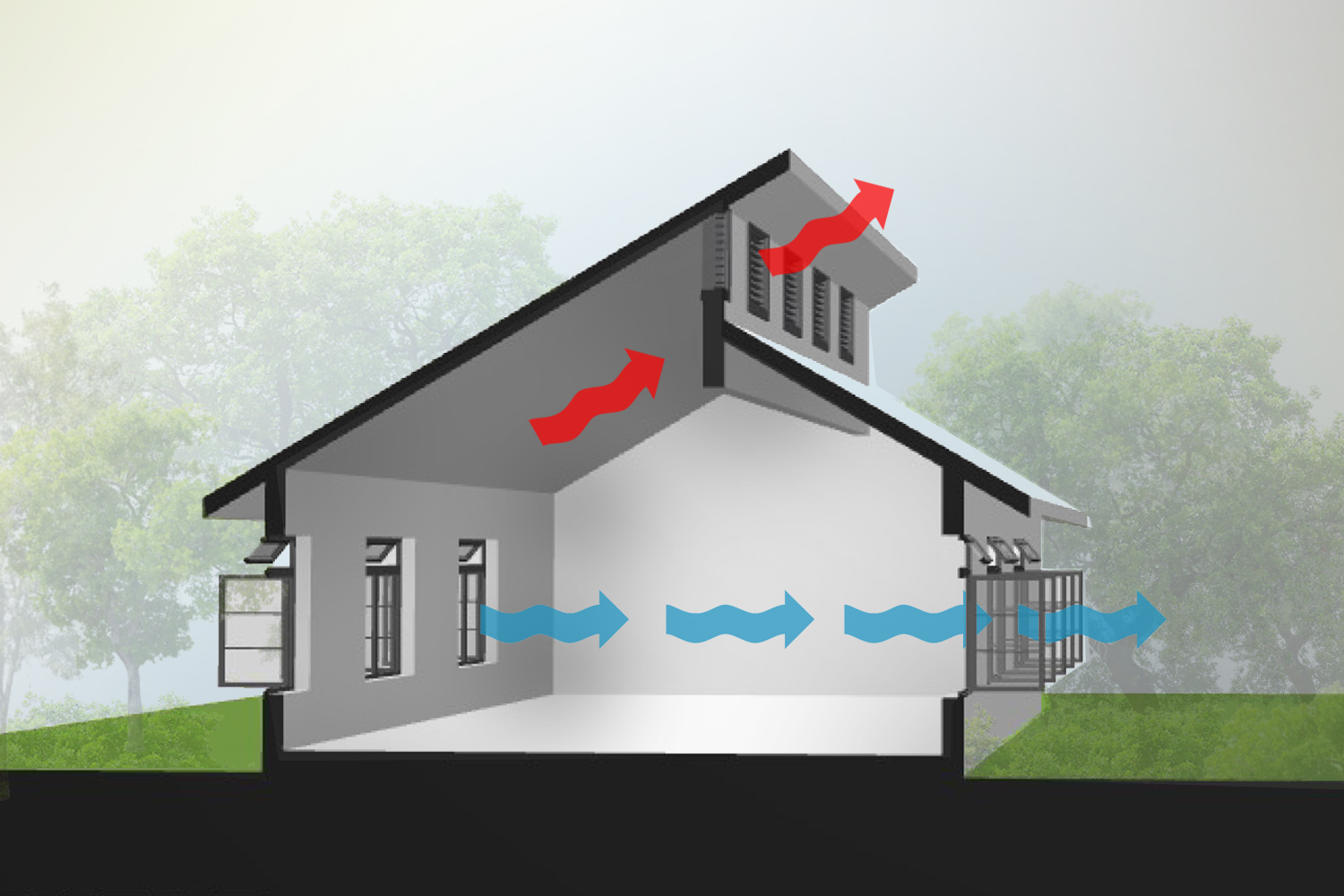The Science Behind Healthy Homes and Home Ventilation Melbourne
Wiki Article
Understanding the Importance of Home Ventilation for a Healthier Living Setting
Home air flow plays an important duty in keeping a healthy living setting. It assists in the exchange of indoor and outside air, which is essential for enhancing air quality. Without proper ventilation, homes can come to be reproducing grounds for pollutants and irritants. The effects of inadequate air blood circulation can be significant. This raises the query of exactly how homeowners can effectively apply ventilation strategies to safeguard their health and health. Understanding these techniques is important.
The Basics of Home Air Flow
Home air flow works as a vital part of interior air high quality and convenience. It involves the process of exchanging stale indoor air with fresh exterior air, consequently minimizing moisture and managing temperature. Proper ventilation systems can consist of all-natural methods, such as open windows and vents, in addition to mechanical systems, such as exhaust followers and air exchangers. Efficient home air flow assists stop issues like indoor mold development and the accumulation of hazardous particles. It additionally enhances total energy efficiency, as well-ventilated spaces can preserve comfortable temperature levels with much less dependence on heating and cooling down systems. Comprehending the essentials of home ventilation is vital for homeowners seeking to develop a much healthier living environment for themselves and their family members.
Typical Resources of Indoor Air Air Pollution

Many might not understand it, indoor air contamination can originate from different resources within a household. Common factors consist of unstable natural compounds (VOCs) discharged from paints, solvents, and cleaning products. Home devices, such as gas stoves and fire places, can release hazardous gases like carbon monoxide gas and nitrogen dioxide. Additionally, mold and mildew and mold prosper in moist areas, launching spores that affect air top quality. Family pet dander, allergen, and plant pollen can gather inside your home, further aggravating air pollution levels. Smoking cigarettes inside creates hazardous chemicals that remain in the air. Developing products, consisting of asbestos and formaldehyde, can off-gas harmful substances. Acknowledging these resources is essential for keeping a much healthier indoor atmosphere and advertising effective ventilation techniques.
Wellness Consequences of Poor Ventilation
Indoor air contamination can have significant health and wellness ramifications, specifically when ventilation is inadequate. Poor ventilation can lead to the accumulation of damaging toxins, such as unstable organic substances, mold and mildew, and particulate matter. This buildup might cause breathing problems, including bronchial asthma, allergic reactions, and persistent obstructive lung condition. People might experience signs like frustrations, tiredness, and inflammation of the eyes, nose, and throat. At risk populaces, such as kids and the elderly, are at greater risk for severe health and wellness effects. Long-term direct exposure to improperly aerated settings can likewise add to much more significant problems, consisting of heart diseases. Subsequently, ensuring appropriate ventilation is important for keeping a healthy living setting and reducing the risk of health issues connected with interior air pollution.Reliable Air Flow Techniques for Your Home
Appropriate air flow is crucial for maintaining a healthy indoor setting, and executing reliable methods can significantly improve air quality. Home owners can begin by guaranteeing that exhaust fans are installed in restrooms and kitchens to get rid of excess moisture and smells. Opening windows routinely permits fresh air to flow, especially throughout mild weather condition. Furthermore, making use of air cleansers with HEPA filters can aid capture air-borne contaminants. For homes with heating and cooling down systems, preserving cooling and heating systems and altering filters frequently is vital for peak efficiency. Integrating natural air flow techniques, such as cross-ventilation, can likewise enhance airflow. Securing any leakages in doors and home windows avoids undesirable drafts, which can interrupt regulated air movement, inevitably leading to enhanced interior air top quality and convenience.Keeping Optimal Air Top Quality Year-Round
To keep excellent air high quality year-round, homeowners must adopt a proactive strategy to managing their interior setting. On a regular basis keeping track of interior air quality is crucial; this consists of checking for toxins such as dirt, mold, and unstable organic substances (VOCs) Executing efficient air flow systems, such as exhaust fans and air purifiers, can greatly decrease air-borne contaminants. Additionally, routine upkeep of a/c systems assurances peak efficiency and air flow. Home owners need to also think about humidity levels, as too much moisture can lead to mold development. Seasonal adjustments might require changes in air flow techniques to accommodate varying exterior air quality. By prioritizing these practices, home owners can develop a much healthier living area, promoting general health for all occupants throughout the year.Regularly Asked Concerns
How Can I Inform if My Home Demands Much Better Air Flow?
To determine if a home requires much better air flow, one should observe signs such as persistent humidity, mold and mildew growth, stuffy odors, condensation on home windows, or raised allergy symptoms, indicating inadequate air flow and potentially poor interior air top quality.What Are the Signs of Poor Indoor Air High Quality?

Can Houseplants Improve Indoor Air Top Quality Effectively?
The efficiency of houseplants in improving indoor air top quality is questioned. While some studies recommend they can take in toxins and create oxygen, their general effect may be minimal compared to correct ventilation and air filtration systems.How Commonly Should I Adjustment My Air Filters?
The frequency of air filter adjustments generally depends on use and filter type. Generally, it is suggested to replace filters every three months, though households with family pets or allergies might need even more frequent adjustments for excellent performance.Exist Any Kind Of Specific Air Flow Solutions for Allergic Reaction Sufferers?
Many ventilation systems, such as HEPA-filtered units, successfully reduce allergens in the air. Home Ventilation Melbourne. These systems trap plant pollen, animal, and dirt dander, giving allergy patients with a cleaner, healthier indoor atmosphere while managing air quality successfully
It facilitates the exchange of indoor and outdoor air, which is important Home Ventilation Melbourne for improving air top quality. Home air flow offers as a vital component of indoor air quality and comfort. It entails the procedure of trading stale interior air with fresh outside air, therefore reducing moisture and controlling temperature level. Indoor air pollution can have considerable health and wellness implications, especially when ventilation is poor. Appropriate ventilation is necessary for preserving a healthy and balanced interior atmosphere, and implementing reliable techniques can significantly boost air quality.
Report this wiki page